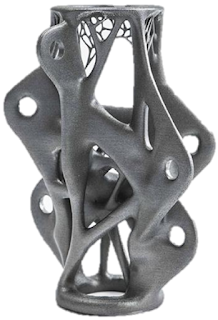FEM: Mesh Quality and Body Simplification (PART 5) - Number of elements and convergence
Have ever you asked: What is the convergence in FEM? Why is convergence so important to FEM? Why perform convergence in FEM? In this topic and final of series "Mesh Quality and Body Simplification", we will discuss a crucial step to validate every analysis: the convergence.
In general, as smaller elements are in the mesh, more accuracy is the problem solution, but by another hand, more computational time is required. When we increase the number of elements in the mesh between two analyses, and there is no significant change in the results, we have the convergence and the mesh independence. Do not matter how many elements are increased in the mesh; the results look like stable while that the solving time, is growing significantly. So, the central question is: how many small elements should I have, to achieve satisfactory results and processing time at once? And the second one question is: How to accelerate my interactions to get the convergence as soon as possible?
Figure 1 - It is essential to find the best balance between the convergence of the result and the solving time. FONT: Xceed-eng.
The convergence test is the most crucial way to warrant the reliability of results and system behavior, through computational analysis. So, it´s a mandatory part of every design made through FEM. The convergence can be done automatic or manual.
To do a manual process isn´t just a matter of getting complex models with minimal elements to provide very accurate results because the solve time could require hours or even days. At first, the mesh quality is as important as the number of elements. Therefore all mesh quality tips shown must be checked before to perform the mesh convergence. After, is required choose an appropriate mesh to the studying convergence, that can be either local or global, and it is important to remember that different metrics have different convergence behavior [COSMOL]. Are there some examples of metrics: total elastic energy, displacement, stress etc. Typically, displacement results are less sensitive to mesh quality, and density than stress results are. Displacement results likely converge faster than stress results do [Autodesk].
Figure 2 - Different behavior for each different metrics for the same model and the same acceptable error. FONT: COSMOL.
After choosing the metric, is essential to discover the mesh behavior and which region has more influence on the final result and where is necessary to refine it. This will be revelated after the first interaction. Therefore, the mesh can be as coarse as possible, with few and large elements that will result in less computational demand. The interest region will be found faster, and at the same time, the consistency of loads and constraints will be checked.
One of the easier strategy of mesh refinement is reducing the elements size at all, but is not efficient, once we will produce excessive elements in regions of lesser interest and increase the computing time.
Figure 3 - Mesh refinement with no one control. Only elements size was reduced. FONT: COSMOL.
Another strategy is increasing elements orders (degrees of freedom – DOF), moving from linear elements to non-linear elements (parabolical, polynomial etc.). The advantage is that practically no remeshing is necessary, and a more next solution to reality behavior is possible to get, but the disadvantage is that computational requirements increase very fast [COSMOL].
Figure 4 - Increasing elements orders, remesh is not necessary FONT: COSMOL.
Global adaptive mesh refinement is a resource present in most of FEM software, where an automatic mesh refinement is done through an error estimation. The disadvantage of this tool is that at significant of time, excessive elements are created in regions of lesser interest.
Figure 5 - Global adaptative mesh refinement FONT: COSMOL.
A similar tool, but with better results than before is the local adaptive mesh, where the refinement is more intensive in interest regions.
Figure 6 - Local adaptative mesh refinement FONT: COSMOL.
St. Venant’s Principle implies that local stresses in one region of a structure do not affect the stresses elsewhere [COSMOL]. It means that areas away from the interesting, requires a much lower mesh refinement, since that region is responsible only for transmitting load (but this coarse mesh region must be faithful to object shape). As a rule, the transition from interest region with fine mesh to coarse mesh should be distant with at least three elements away (for the linear element) [COSMOL].
Figure 7 - Separation between coarse and fine meshes. FONT: COSMOL.
It is common we use spreadsheets and graphics to support us during a manual convergence test. The spreadsheet below is an example of this control.
Table 1 - Control Spreadsheet to Manual Convergence.
Most of FEM software have an automatic process to convergence. It´s done basically with three inputs: Which metric do you want to converge, how many interactions to do (typically three is the minimum number of interactions) and how much is the minimum acceptable error (for a responsible analysis, is typically recommended 1 to 3%).
Is important we have attention on cases with stress concentrations, in special, regions with corners without radius subjects to the biggest stress on analysis. These regions must have some radius on edge (like real parts) or the stress at this point will tend to infinite and never converge. Another aspect is if we achieve convergence in a problem and we need increase only the value of loading, is not necessary redo the convergence process, but just if we keep in the linear behaviour of problem. Check if the material is keeping in the linear regime, the convergence of nonlinear behaviour has different behavior and strategies.
Figure 8 - Convergence does not
happen when the corner is without radius on edge.











Comments
Post a Comment